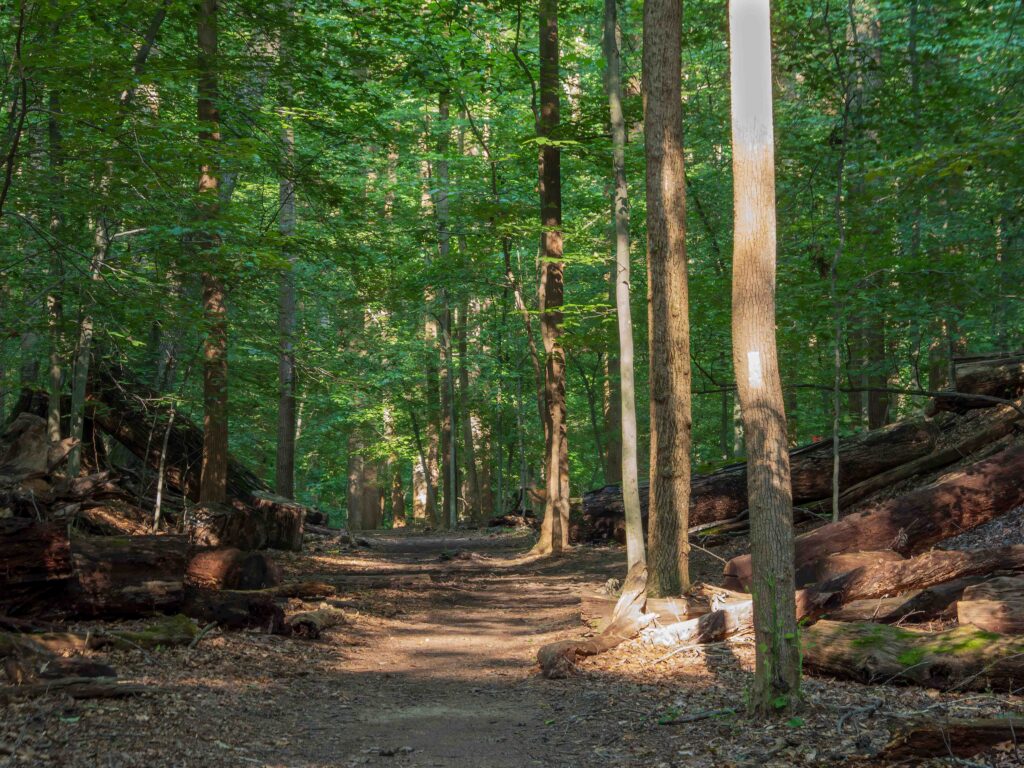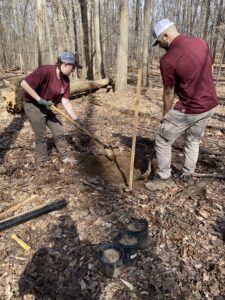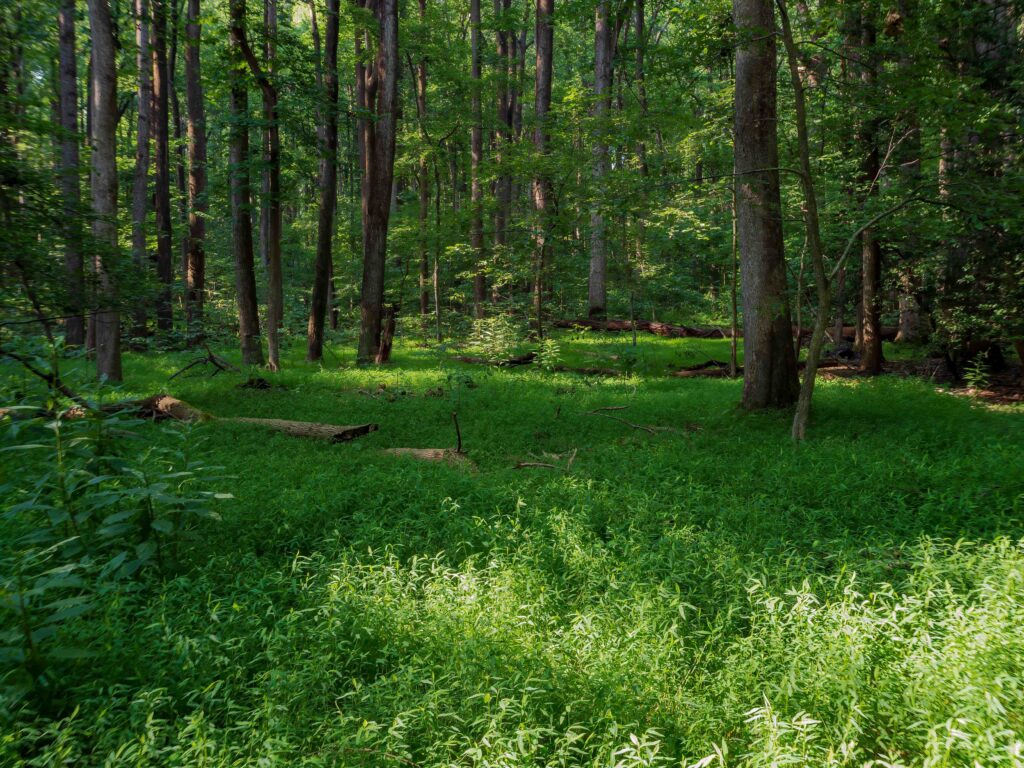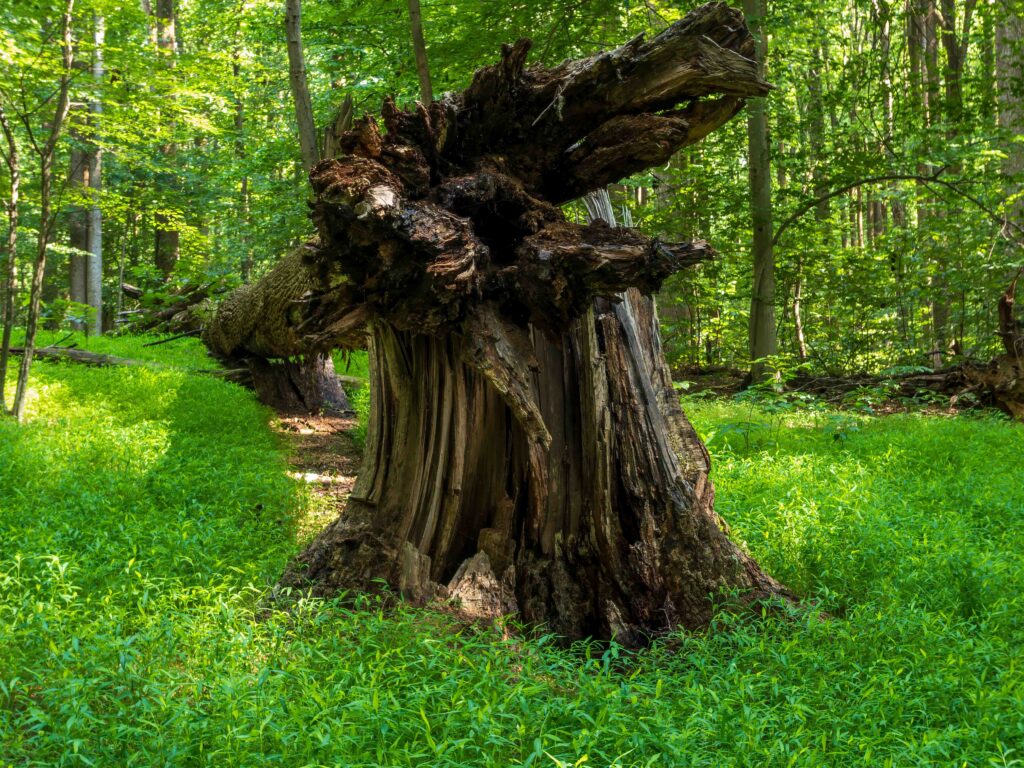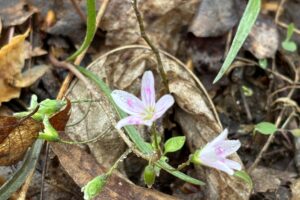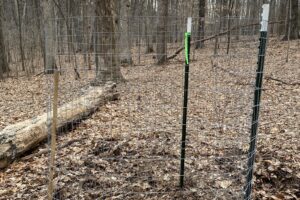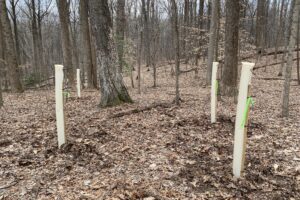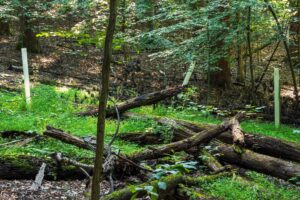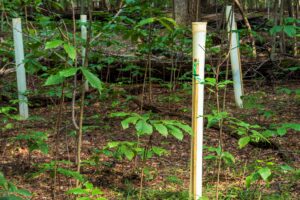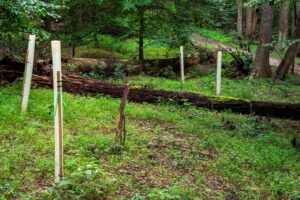Photo credit: Francis Grant-Suttie
The C&O Canal, including the Gold Mine Tract, is classified as facing imminent failure regarding forest regeneration if current trends persist. In response, the National Park Service (NPS) has initiated a comprehensive restoration project to encourage forest regeneration. NPS staff have already planted over 100 native trees and shrubs in the Gold Mine Tract to combat the threat of invasive species. In order to reach maturity, a tree seedling must overcome multiple challenges, including habitat degradation, invasive species, white-tailed deer, and other forest pests.
“Regeneration of trees is really low because of deer. That’s a big problem because…there are no trees to take advantage of the canopy gaps. Invasive species take advantage of these openings because deer don’t eat them.”
As deer numbers increase, they consume more young native plants across the forest, whereas non-native invasive species, like Japanese barberry, wavyleaf basketgrass, winged burningbush, and leatherleaf mahonia, often lack natural predators, leaving their growth unchecked. Young plants are the preferred food for deer and often do not reach maturity because of intense deer browsing. The park has been managing deer since 2019 and is implementing deer prevention strategies for Gold Mine reforestation.
After avoiding herds of white-tailed deer, with a little bit of luck, a sapling will reach maturity. Unfortunately, that does not mean our tree has escaped all of the forest’s threats. Young and mature trees are under constant threat from forest pests, such as the emerald ash borer, which devastated the park’s ash trees several years ago. First noted in 2024, Beech leaf disease is an emerging pest in the Gold Mine Tract. This nematode infests Beech leaves, weakening trees and ultimately leading to their death. There are no established management or treatment plans to combat this disease. However, the park is proactively preparing for gaps in the forest canopy as larger trees fall.
“Part of restoration is anticipating gaps and planting trees there so there are trees ready to take off when the Beech tree comes down,” says Strickler.

